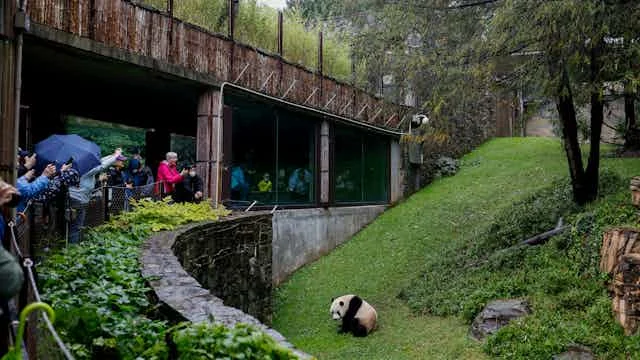
The Intriguing Relationship Between Zoos and Politics Through History
The intersection of politics and zoos is a fascinating, albeit often overlooked, aspect of history. From World War II to the Cold War, zoos have not only showcased animals but have also served as ideological battlegrounds reflecting the societal values and political climates of their times.
Recently, during a stark political climate, an executive order issued by former President Donald Trump aimed to eradicate "improper ideology" at federal history sites, including the National Zoo in Washington, D.C. This move was met with ridicule by critics who found the suggestion that zoos might be indoctrinating visitors absurd. Late-night host Seth Meyers remarked, "Seriously, what the hell is 'improper' ideology at the zoo?" seemingly bemused by the implications. Historically, zoos have operated under political and ideological considerations, affecting how they are perceived and run.

In the context of both World Wars, zoos were not mere institutions for entertainment; they were urged by governments to embrace ideologies of sacrifice and nationalism. For instance, during World War II, numerous zoos in North America and the British Empire had to make drastic measures, including killing animals perceived as threats to public safety amidst growing tensions of war. In 1939, the London Zoo resorted to slaughtering over 200 animals, creating a grim reflection of wartime necessities.
This ideological control over zoos extended further under authoritarian regimes. In Nazi Germany, zoos enforced "Aryan-only" visitation policies, adorned with swastikas, while in Japan, the Ueno Zoo was directed to execute a series of "propaganda killings" to galvanize public sentiments amidst the struggle of war. Even under the Soviet regime, zoos were compelled to contribute to the war effort, creating a stark contrast to their intended purpose as sanctuaries for animal conservation.
The Cold War era introduced a new dynamic, particularly between the divided zoos of Berlin—a microcosm of the ideological divide itself. No animals became more emblematic of this struggle than the giant pandas from China. Denied by the U.S. State Department as "enemy goods" during the earlier years, the thawing of relations saw the first lady, Pat Nixon, receiving the first pandas in 1972 as symbols of diplomacy and soft power. These giant creatures became more than just animals; they represented the hopes of bridging gaps between opposing ideologies.
As we look at the role of zoos from a historical perspective, it is astonishing to realize how these institutions have mirrored human conflicts and ideologies. One cannot help but ponder what lies ahead for zoos in our current political landscape. Are they destined to remain centers of pure entertainment and education, or will they continue to reflect societal beliefs and values in a more profound way? What do you think about the influence of politics on our relationship with animals in such settings? Please share your thoughts in the comments.